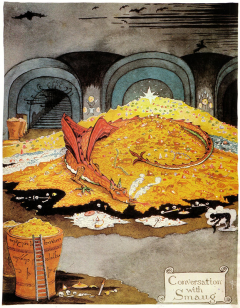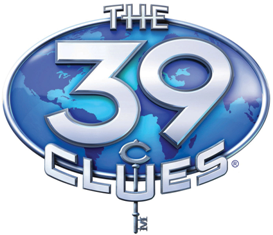Related Research Articles
Infocom was an American software company based in Cambridge, Massachusetts, that produced numerous works of interactive fiction. They also produced a business application, a relational database called Cornerstone.

Zork is an interactive fiction computer game. It was originally developed by four members of the MIT Dynamic Modelling Group—Tim Anderson, Marc Blank, Bruce Daniels, and Dave Lebling–between 1977 and 1979 for the DEC PDP-10 mainframe computer. The four founded the company Infocom in 1979 and released Zork as a commercial game for personal computers, split due to memory limits of personal computers compared to the mainframe system. The three titles released commercially were Zork: The Great Underground Empire – Part I in 1980, Zork II: The Wizard of Frobozz in 1981, and Zork III: The Dungeon Master in 1982. The game has since been ported to numerous systems.

The Voynich manuscript is an illustrated codex hand-written in an otherwise unknown writing system, referred to as 'Voynichese'. The vellum on which it is written has been carbon-dated to the early 15th century (1404–1438), and stylistic analysis indicates it may have been composed in Italy during the Italian Renaissance. The origins, authorship and purpose of the manuscript are debated. Various hypotheses have been suggested for the text, including: an otherwise unrecorded script for a natural language or constructed language; an unread code, cypher or other cryptography; or simply a meaningless hoax.

Smaug is a dragon and the main antagonist in J. R. R. Tolkien's 1937 novel The Hobbit, his treasure and the mountain he lives in being the goal of the quest. Powerful and fearsome, he invaded the Dwarf kingdom of Erebor 150 years prior to the events described in the novel. A group of thirteen dwarves mounted a quest to take the kingdom back, aided by the wizard Gandalf and the hobbit Bilbo Baggins. In The Hobbit, Thorin describes Smaug as "a most specially greedy, strong and wicked worm".

Invisible ink, also known as security ink or sympathetic ink, is a substance used for writing, which is invisible either on application or soon thereafter, and can later be made visible by some means. Invisible ink is one form of steganography.
A canary trap is a method for exposing an information leak by giving different versions of a sensitive document to each of several suspects and seeing which version gets leaked. It could be one false statement, to see whether sensitive information gets out to other people as well. Special attention is paid to the quality of the prose of the unique language, in the hopes that the suspect will repeat it verbatim in the leak, thereby identifying the version of the document.

Kryptos is a sculpture by the American artist Jim Sanborn located on the grounds of the Central Intelligence Agency (CIA) in Langley, Virginia. Since its dedication on November 3, 1990, there has been much speculation about the meaning of the four encrypted messages it bears. Of these four messages, the first three have been solved, while the fourth message remains one of the most famous unsolved codes in the world. The sculpture continues to be of interest to cryptanalysts, both amateur and professional, who are attempting to decipher the fourth passage. The artist has so far given four clues to this passage.

National Treasure is a 2004 American action-adventure film released by Walt Disney Pictures. It was written by Jim Kouf and the Wibberleys, produced by Jerry Bruckheimer and directed by Jon Turteltaub. It is the first film in the National Treasure film series and stars Nicolas Cage, Harvey Keitel, Jon Voight, Diane Kruger, Sean Bean, Justin Bartha, and Christopher Plummer.

The Lost Treasures of Infocom is a 1991 compilation of 20 previously-released interactive fiction games developed by Infocom. It was published by Activision for MS-DOS, Macintosh, Amiga, and Apple IIGS versions. It was later re-released on CD-ROM, and in 2012 on iOS.

Swordquest is an unfinished series of video games produced by Atari, Inc. in the 1980s as part of a contest, consisting of three finished games, Earthworld, Fireworld, and Waterworld, and a planned fourth game, Airworld. Each of the games came with a comic book that explained the plot, as well as containing part of the solution to a major puzzle that had to be solved to win the contest, with a series of prizes on offer whose total value was $150,000. The series had its genesis as a possible sequel to Atari's groundbreaking 1979 title Adventure, but it developed mythology and system of play that was unique.
InvisiClues were hint booklets sold by Infocom to help players solve puzzles in their interactive fiction computer games.

Masquerade is a picture book, written and illustrated by Kit Williams and published in August 1979, that sparked a treasure hunt by including concealed clues to the location of a jewelled golden hare that had been created and hidden somewhere in Britain by Williams. The book became the inspiration for a genre of books known today as armchair treasure hunts.

Moonmist is an interactive fiction computer game written by Stu Galley and Jim Lawrence and published by Infocom in 1986. The game was released simultaneously for the Amiga, Amstrad CPC, Apple II, Atari 8-bit family, Atari ST, Commodore 64, MS-DOS, TRS-80, TI-99/4A, and Macintosh. It is Infocom's twenty-second game. Moonmist was re-released in Infocom's 1995 compilation The Mystery Collection, as well as the 1996 compilation Classic Text Adventure Masterpieces.

The Worlds of Power books are a series of novelizations of video games for the Nintendo Entertainment System released in the early 1990s by Scholastic. The series was created by Seth Godin and take creative liberties with their source material. They usually include game hints written upside down at the end of chapters and are written in a simplistic, easy-to-read style.
Roma Shane Ryan is a Northern Irish writer, poet, and lyricist, currently living in Artane, Ireland, with her husband Nicky.

An ultraviolet (UV) marker is a pen whose marks are fluorescent but transparent: the marks can be seen only under an ultraviolet light. They are commonly used in security situations to identify belongings or to prevent the reproduction of unauthorized banknotes. UV pens can now be bought at some stationery shops to securely mark items of high value in case of theft.

The 39 Clues is a series of adventure novels written by a collaboration of authors, including Rick Riordan, Gordon Korman, Peter Lerangis, Jude Watson, Patrick Carman, Linda Sue Park, Margaret Peterson Haddix, Roland Smith, David Baldacci, Jeff Hirsch, Natalie Standiford, C. Alexander London, Sarwat Chadda and Jenny Goebel. It consists of five series, The Clue Hunt, Cahills vs. Vespers, Unstoppable, Doublecross, and Superspecial. They chronicle the adventures of two siblings, Amy and Dan Cahill, who discover that their family, the Cahills, have been and still are, the most influential family in history. The first story arc concerns Dan and Amy's quest to find the 39 Clues, which are ingredients to a serum that can create the most powerful person on Earth. This series' primary audience is age 8–12. Since the release of the first novel, The Maze of Bones, on September 9, 2008, the books have gained popularity, positive reception, and commercial success. As of July 2010, the book series has about 8.5 million copies in print and has been translated into 24 languages. The publisher of the books is Scholastic Press in the United States. Steven Spielberg acquired film rights to the series in June 2008, and a film based on the books was set to be released in 2016 but production has not yet started as of February 2020. The series also originated tie-in merchandise, including collectible cards and an interactive Internet game.

Blizzard Pass was the first solo adventure module for the Dungeons & Dragons fantasy role-playing game. It was published by TSR in 1983 and used the Basic Rules.

Maze of the Riddling Minotaur is an adventure module published by TSR in 1983 for the Expert Set of the Dungeons & Dragons fantasy role-playing game. It is a solo adventure for one player character of level 1–10.

Cipher Hunt was an alternate reality game and international scavenger hunt created by animator and voice actor Alex Hirsch based on his animated series Gravity Falls. The goal was to find the real-life statue of the series' antagonist Bill Cipher which was briefly glimpsed at the end of the series finale. The hunt involved retrieving and decoding clues hidden in various locations around the world.
References
- ↑ "Confidential Secret Decoder Pen". Archived from the original on 15 August 2013. Retrieved 24 August 2013.